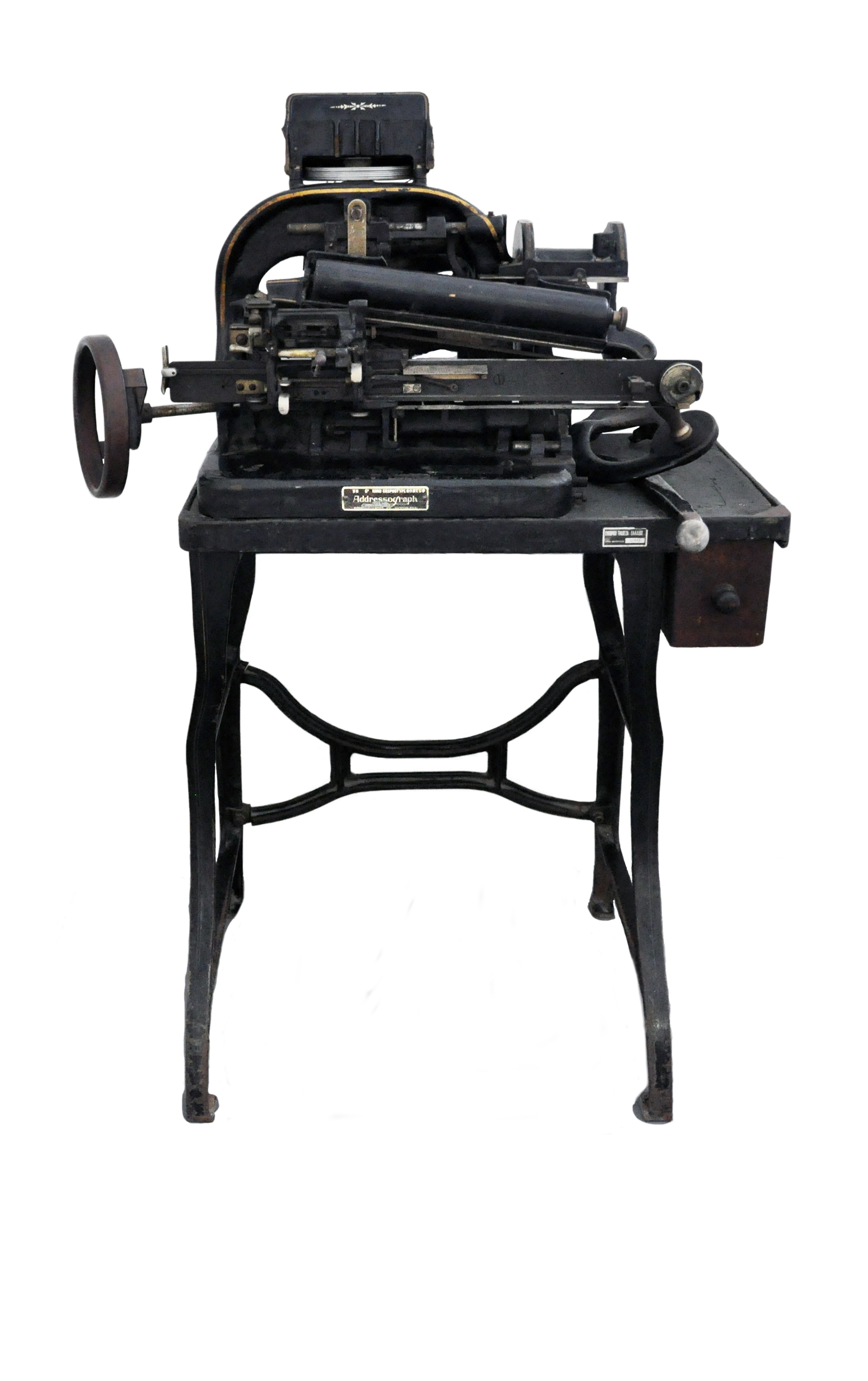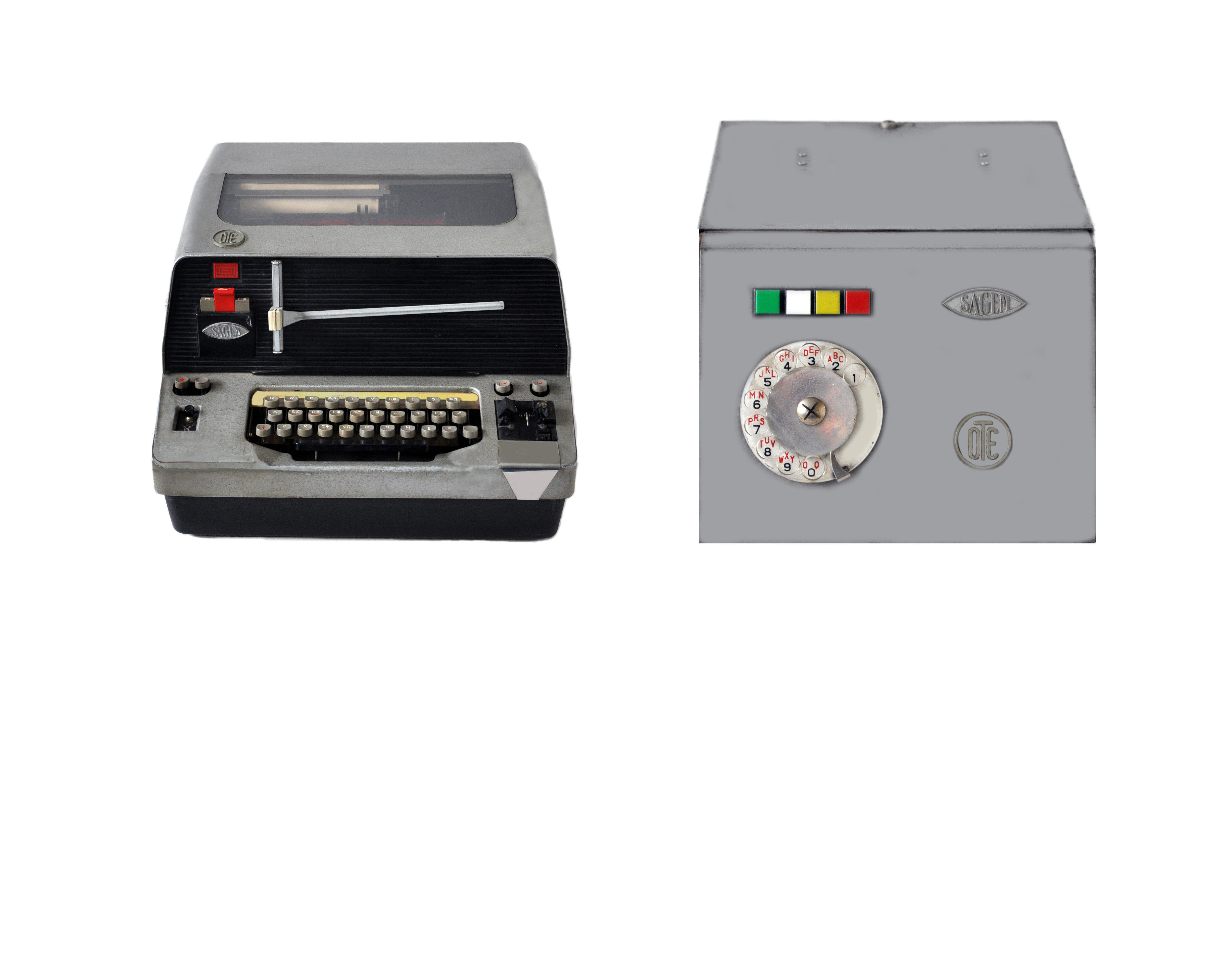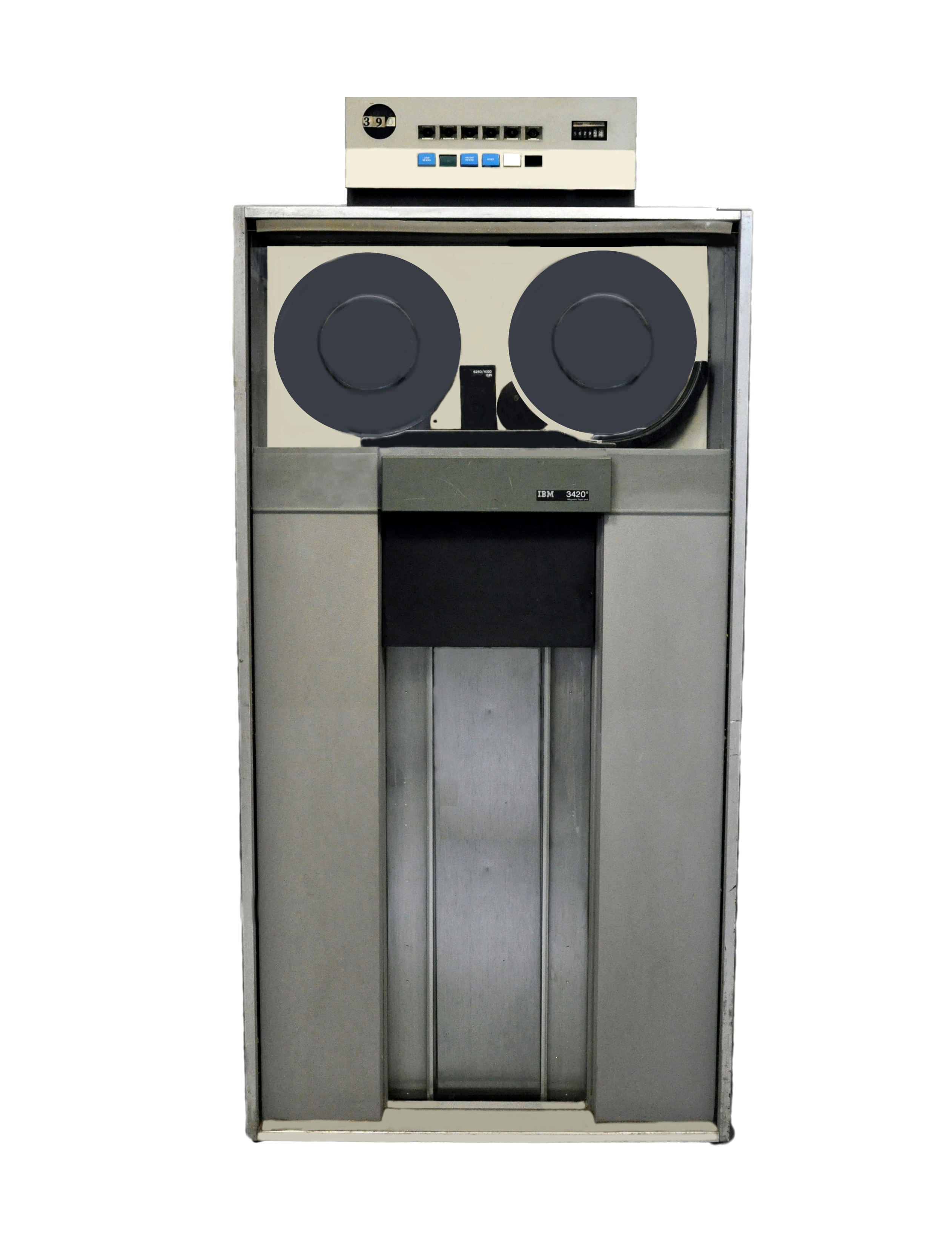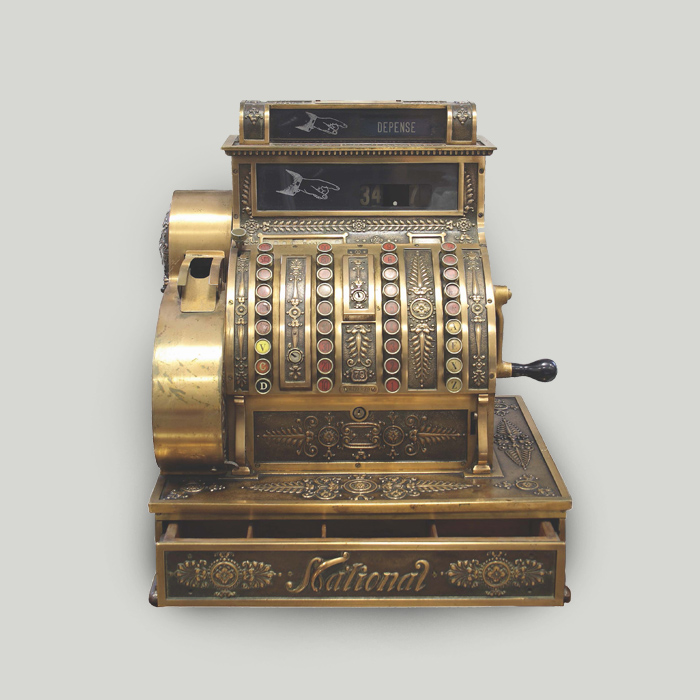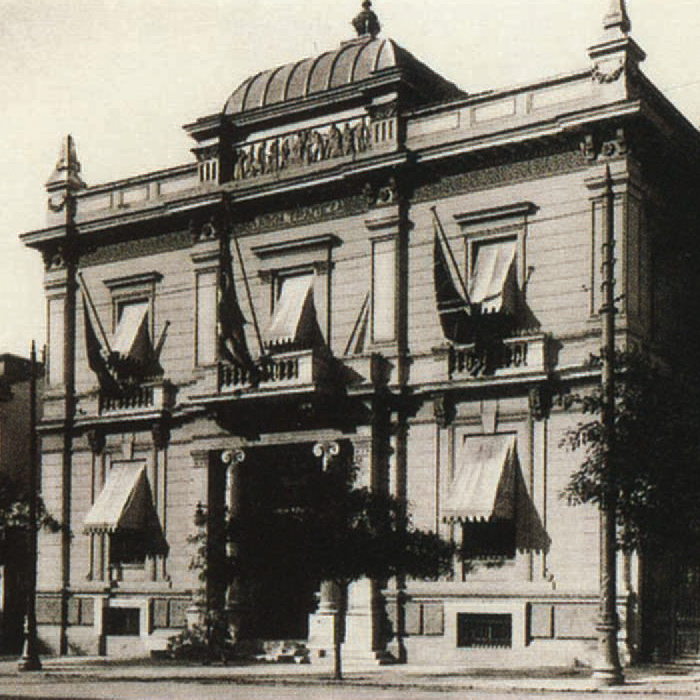Technology and Emporiki Bank
Emporiki was the first bank in Greece to launch a bank-on-wheels service. It also created one of the first IT centres in the Greek market. By pioneering the use of IT, Emporiki Bank contributed to the modernisation of services in Greece. Emporiki Bank’s technology collection includes decommissioned technical equipment used from 1920 to 1991.
The technology used by Emporiki Bank from 1920 to 1991 includes equipment that is typical of the periods during which it was used, including:
- Addressograph manual address labeller and labelling system (photo 1).
- Typewriter console (photo 2).
- Calling machine bearing the logos of OTE (the national telecommunications company at the time) and manufacturer SAGEM (photo 3).
- IBM 3420 computer (photo 4).
- One of the first NCR automated teller machines (ATM) (photo 5).
First attempts at modernisation
Emporiki Bank (Commercial Bank of Greece) made its first steps towards modernising its banking operations and services in the late 1950s.
That is when the bank commissioned the French Compagnie Générale d’ Organisation to devise a strategy for modernising its operations and employing automated processes. This was done to the end of bringing operations up to date with the requirements of the modern era.
Fast-track computerisation
Soon the bank was able to implement increasingly computerised systems. 1962 saw the operation of the bank’s first IT centre. The centre was based on an IBM 1401 mainframe. The equipment was installed at a purposely-configured floor of the Emporiki Bank headquarters on Sofokleous Street.
The first operations assigned to the computer included the handling of cheques and orders, security payments and deposits.
To cope with increasing system demands, however, the bank had to purchase an IBM 360.
Innovation across operations
As the Emporiki Bank Group grew stronger, it was decided to implement a series of actions considered innovative at the time.
Emporiki Bank was the first bank in Greece to launch a bank-on-wheels service. This groundbreaking service took banking services to hundreds of remote towns and villages.
Most branches in Athens were connected with the IT centre. This resulted in much faster deposit, withdrawal and passbook updating processes.
In 1973 Emporiki Bank installed the new IBM 370/145 mainframe. This new piece of equipment made it possible for all branches to directly access the mainframe.
Therefore, the now obsolete account cards were gradually replaced by the online / real-time processing system running on the IT centre mainframe. Over the following years, the entire network gained access to the system.
At the same time, automated transactions became increasingly available. The bank’s branches and cash deposit boxes became part of the off-line system comprising the portfolio, bill of exchange, note, settlement, fund transfer, and checkable and savings deposits applications.
1977 saw yet another upgrade to Emporiki Bank’s electronic equipment, as the bank acquired the new IBM 3420 mainframe.
The bank’s connection to the SWIFT and Reuter international networks was also finalised in the same year.
Rapid technological upgrades
During the 1980s, all the more branches were provided with computerised systems so that they could offer services for deposits in drachmas.
By the early 1990s, every single branch had gone online. Around the same time, the bank actively tried to expand its network of automated teller machines (ATMs).
During that decade, new point-of-sales terminals were also installed. This would make it easier for large retailers to clear credit card transactions.
In 1997 Emporiki Bank’s new IT centre started operating out of new facilities in Cholargos, Athens. After the 2013 upgrade, it operated as Alpha Bank’s IT centre.
Over the 2000s, the bank would implement an ongoing plan to reorganise its operating systems. In this context, it installed banking automation software and invested in state-of-the-art IT systems.
Emporiki Bank’s technology collection includes a wealth of equipment used from 1920 to 1991.
These devices tell the story of the bank’s increasing use of advanced technology from the early 20th and into the first decade of the 21st century.
The Alpha Bank Historical Archives are not open to the public.
Research visits can be organised upon request.
Contact us to request a visit.
